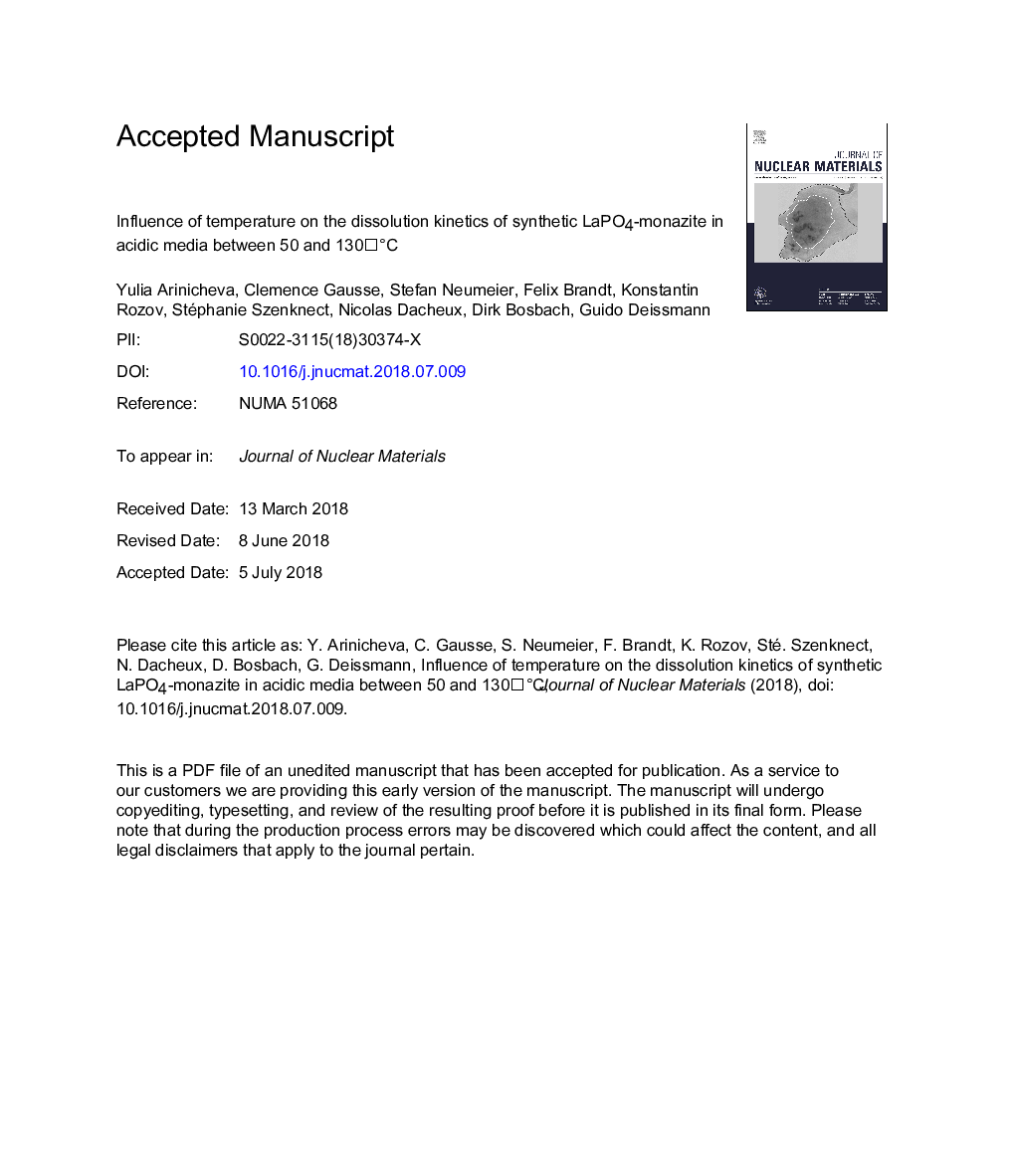| Article ID | Journal | Published Year | Pages | File Type |
|---|---|---|---|---|
| 7963016 | Journal of Nuclear Materials | 2018 | 20 Pages |
Abstract
Single-phase monazite-type ceramics are discussed as waste forms for the safe disposal of surplus plutonium or separated minor actinides. To gain a deeper insight into the mechanism governing the dissolution of monazite-type compounds, the dissolution kinetics of synthetic LaPO4-monazite was systematically studied by dynamic dissolution experiments carried out in the temperature range from 50 to 130â¯Â°C in acidic media (0.01â¯M HNO3). The dissolution rates at far from equilibrium conditions increased from 3.2â¯Ãâ¯10â5â¯gâ¯mâ2â¯dâ1 at 50â¯Â°C to 2.5â¯Ãâ¯10â4â¯gâ¯mâ2â¯dâ1 at 130â¯Â°C. Two different temperature regions were observed, in which the normalised dissolution rates of LaPO4 have a diverging temperature dependence, indicating two different mechanisms of dissolution: namely surface-controlled dissolution (Tâ¯=â¯50-90â¯Â°C; Eaâ¯=â¯44â¯kJâ¯molâ1) and transport-controlled dissolution (Tâ¯=â¯90-130â¯Â°C; Eaâ¯=â¯7.5â¯kJâ¯molâ1). Complementary thermodynamic modelling studies of the dissolution of LaPO4 at the experimental conditions show that La-rhabdophane (LaPO4·0.667H2O) is the thermodynamically favoured phosphate phase in aqueous environments below about 100â¯Â°C. Apparently, the hydration of monazite and the formation of a thin surface layer consisting of rhabdophane is an intermediate step controlling the dissolution kinetics of the LaPO4 monazite ceramics in low temperature aqueous environments.
Related Topics
Physical Sciences and Engineering
Energy
Nuclear Energy and Engineering
Authors
Yulia Arinicheva, Clemence Gausse, Stefan Neumeier, Felix Brandt, Konstantin Rozov, Stéphanie Szenknect, Nicolas Dacheux, Dirk Bosbach, Guido Deissmann,
